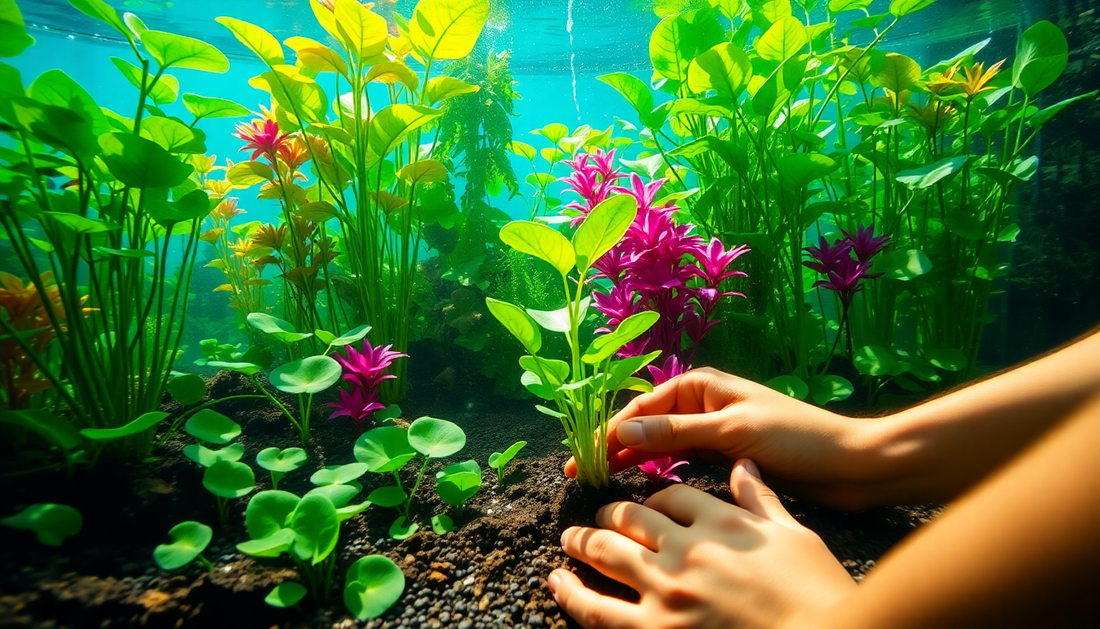
The Ultimate Guide to Potting Mix for Aquatic Vegetables
Share
As the demand for sustainable and self-sufficient living grows, more and more people are turning to growing their own aquatic vegetables. Whether you're an experienced gardener or just starting out, choosing the right potting mix is crucial for the success of your aquatic vegetable garden. In this comprehensive guide, we'll explore the key factors to consider when selecting the perfect potting mix for your aquatic veggies.
Understanding Aquatic Vegetable Soil Requirements
Aquatic vegetables, such as water spinach, water chestnut, and water mimosa, have unique soil requirements that differ from their terrestrial counterparts. These plants thrive in nutrient-rich, water-retentive, and well-aerated soil. Traditional potting mixes designed for regular houseplants or outdoor gardens may not provide the optimal conditions for aquatic vegetables to flourish.
Moisture Retention
Aquatic vegetables require consistently moist soil to thrive. The potting mix you choose should be able to hold onto water without becoming waterlogged or soggy. Look for mixes that contain water-absorbent materials, such as peat moss or coir, to ensure your plants have access to the moisture they need.
Nutrient Content
Aquatic vegetables are heavy feeders and require a nutrient-rich soil to support their growth. The potting mix should be enriched with organic matter, such as compost or aged manure, to provide a steady supply of essential nutrients for your plants.
Aeration
Proper aeration is crucial for aquatic vegetable roots to receive the oxygen they need. The potting mix should be lightweight and porous, allowing for adequate air circulation around the roots. Avoid dense, compacted soils that can restrict root growth and lead to root rot.
Choosing the Right Potting Mix
With these key requirements in mind, let's explore the best potting mix options for your aquatic vegetable garden:
Water-Absorbent Potting Mix
Look for potting mixes that are specifically formulated for aquatic or water-loving plants. These mixes typically contain a blend of peat moss, coir, and other water-retentive materials to ensure your plants have access to the moisture they need.
Enriched Gardening Mix
An enriched gardening mix, fortified with organic matter and nutrients, can also be an excellent choice for aquatic vegetables. These mixes often contain compost, aged manure, or other nutrient-rich ingredients to support the growth of your aquatic plants.
Lightweight Organic Soil
For a more customizable approach, consider using a lightweight, organic soil as the base for your potting mix. You can then add in water-absorbent materials, such as perlite or vermiculite, to enhance the soil's moisture-holding capacity.
Eco-Friendly Soil Solutions
If you're looking for a more sustainable option, explore eco-friendly soil solutions that incorporate renewable and biodegradable materials, such as bamboo fiber or coconut coir. These innovative mixes can provide the ideal growing environment for your aquatic vegetables while minimizing your environmental impact.
Preparing and Maintaining Your Potting Mix
Once you've selected the perfect potting mix for your aquatic vegetable garden, it's important to properly prepare and maintain it to ensure optimal plant growth.
Mixing and Amending the Potting Mix
Before planting, thoroughly mix your chosen potting mix with any additional amendments, such as compost or slow-release fertilizers. This will help ensure an even distribution of nutrients and water-retentive materials throughout the soil.
Maintaining Moisture Levels
Regularly check the moisture levels in your potting mix and water your plants as needed to keep the soil consistently moist but not waterlogged. Consider using a self-watering planter or an automated irrigation system to simplify the watering process.
Replenishing Nutrients
Over time, the nutrients in your potting mix will be depleted as your aquatic vegetables absorb them. Periodically top-dress your plants with a slow-release organic fertilizer or compost to replenish the soil's nutrient content.
Conclusion
Choosing the right potting mix is essential for the success of your aquatic vegetable garden. By selecting a water-absorbent, nutrient-rich, and well-aerated soil, you can provide your plants with the optimal growing conditions they need to thrive. Remember to properly prepare and maintain your potting mix to ensure a bountiful harvest of delicious and nutritious aquatic vegetables.
Happy gardening!
